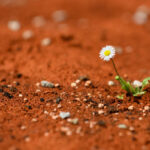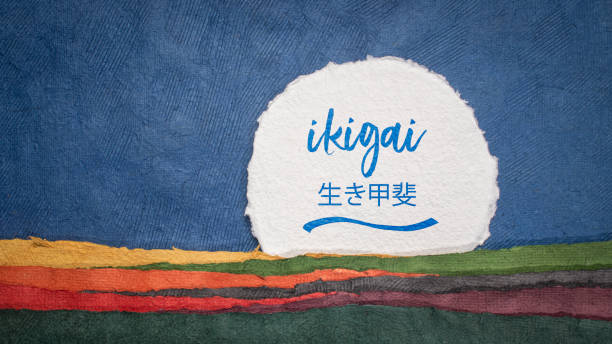Jiro has been making sushi every day for more than eighty years in a small sushi restaurant in the Ginza subway in Japan. He goes personally with his son to the fish market to choose the best sushi for the restaurant. Jiro and his son are food artisans. They let themselves be carried away by the ''flow'' while cooking, they are not bored. They appreciate their work to the highest degree. For them, It's pure happiness, it's their ikigai.
They have learned to view their work in this way, makingit a pleasure that suspends time. Even if they watched their restaurant become the best sushi restaurant in the world according to the Michelin guide, they never looked at opening other restaurants or to branch out. The Jiro family places their quality of life above economic interest on which they let themselves be carried away by the ''flow'' while cooking, and producing the best sushi in the world.
Jiro and his son therefore have a defined ikigai.
An ikigai...is what ?
Ikigai is a holistic Japenese concept that means ''purpose''. ''Iki'' means life whereas ''gai'' means value.
In the Okinawan culture in Japan, the ikigai is perceived like a reason to get up in the morning and a way to contribute to society. When we have something that is strong inside yourself and that you wish to transmit it. This provides great intrinsic motivation.
In Japanese culture, having a vital purpose is so important that they don't know our concept of retirement.
The ikigai is at the crossroads of four elements: 1) what you like or your passion; 2) what the world needs; 3) what you are naturally good and talented at; 4) what you could be rewarded for. It's a different concept from the Western countries, where professional life is opposed to leisure.

The ikigai is unique to each individual, and can be reformulated many times over time.
The effects of ikigai
Developing a sense of purpose balances and enriches life. On the contrary, an existential void appears when the meaning of life is lacking. At this time, we try to fill this void by an economic power, physical pleasure or mental numbness.
This is why having a reason to live is essential. It would prolong longevity and help to stay healthy (protect against stress and disease). The ikigai is one of the reasons that would explain the great longevity of people from Okinawa in Japan (this is where there are more centenarians in the world). These people wish less to take their retirement, they continue working as long as they are healthy.
Another common characteristic to all the people that have a well-defined ikigai is their resilience. They cling to their passion no matter what. When they have setbacks in life, when obstacles multiply, they never surrender. They continue to fight against all odds.

The ''flow''...a component of ikigai
When a person practices her ikigai, she is immersed in a state of ''flow''. That is to say, she is absorbed in what she is doing and only the activity seems to matter to her. The person totally ignores her environment while appreciating the task to accomplish while having fun doing it.
Focusing on only one activity is perhaps the most important condition for entering the ''flow''. And to be focused on an activity, we need to be in a supportive environment that does not distract us. We also need to have a control over what we do at all times.
Finally, according to researcher Owen Schaffer, for us to enter a state of ''flow'' during an activity, the following conditions have to be met: 1) Know what to do; 2) Know how to do it; 3) Know if we are doing it well; 4) Assume a task what we can carry out, but at the same time slightly exceeds our skills; 5) Use our best personal resources; 6) Not give in to distractions.
The example of Hayao Miyazaki
The Japenese Hayao Miyazaki is a creator who also has a very defined ikigai. Oscar-winning animated film director, he lets himself be carried away by the ''flow''of his present task. He does not own a computer, he continues to use a mobile phone from the late 1990s and forces his entire team to draw by hand. He ''shoots'' his movies by creating and drawing down to the latest detail on paper. It's the drawing that enables him to enter the ''flow'', not the computers.
Thanks to the passion and rigor of the director, the studio of Hayao is the only one in the world where practically all the production of the animation process is done according to traditional techniques. His passion is such that very often he is in the studio on Sundays, enjoying the ''flow'', living his ikigai above all.

Hayao could not stop himself from drawing. A year after his ''retirement'', he declared that he would no longer make feature films, but that he would ''draw until the day he died''.
The example of Steve Jobs
The American Steve Jobs, creator of the Apple company, represents a success in the technology field. It seems that he was not overly passionate about computers. He was rather passionate about the tools to express his creativity. It seems that it was his curiosity and interest in calligraphy that inspired him in his creation of Apple and its unique typography.

Modest ikigai
The ikigai of Jiro, Hayao Miyazaki, Steve Jobs allow them (or have allowed them) to shine and be successful. Nevertheless, ikigai can also lead to more modest results, as long as the person fully experiences the process:
''I grow my vegetables and cook them, it's my ikigai. ''

Or:
''Catching up with my friends is my most important ikigai. Here we all meet and talk, it's very important. I always think about the next time, when we get together, that's what I love most about life. ''
In conclusion: finding your ikigai
All in all, finding your ikigai requires a deep exploration of yourself, your passions, interests and values. This requires courage, determination and perseverance. To find your ikigai, you have to overcome your fears, negativity and concerns. You must take concrete actions so as to improve your self-confidence. And also try to see your obstacles as opportunities.
On a more global level, it is important for you to rethink the economy so that everyone can live his ikigai, and this at all ages of life. This means putting less emphasis on financial growth and focusing on how the economy can be more beneficial to people and the planet.

Très intéressant.
C’est un très beau mode de vie qui ramène à l’essentiel et qui donne du sens aux petites et grandes choses pour lesquelles je fais de mon mieux. Merci d’avoir écrit cet article.
Merci Prunelle.
Janike m’a parlé de ton texte. Ton
document m’inspire et m’a aidé à bien comprendre ce que représente le ikigai. Je compte bien essayer de l’intégrer dans mon quotidien et j ‘espère pouvoir te lire de nouveau.
Je viens de lire un livre qui parle justement de ce thème.
Ça s’appelle “Donner un sens à sa vie” par Viktor Frankl
Il était un rescapé des camps de concentration durant la Seconde Guerre Mondiale. Il a beaucoup souffert.
Il était psychiatre et a créé la Logotherapie Logo signifiant “sens”.
C’est un livre très intéressant et inspirant !